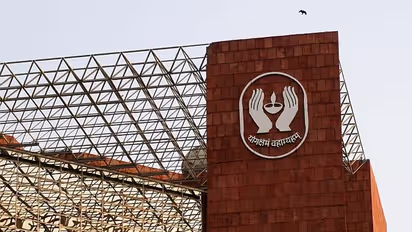LIC IPO: The government's golden goose

Synopsis
Even if the LIC share does not list with a big bang, it would steadily scale up as the corporation adjusts to the new world of a public listed company, says Prakash Chawla
The Government of India is the sole owner of the Life Insurance Corporation of India, the country's largest insurer enjoying two-thirds of the market even two decades after the entry of private sector players.
The government has been wanting to sell a part of its ownership through an Initial Public Offering for which it had to set a valuation. As per the formula that would have been suggested by merchant bankers and other lead advisors, the LIC was valued between Rs 12-13 lakh crore before the Ukraine-Russia war and persistent outflows by the foreign institutional investors from the emerging markets.
Also Read: LIC fixes price band for IPO with a discount for employees, policyholders
Having committed to disinvest a part of its equity or ownership stake in LIC, five per cent at one stage at a total enterprise valuation of Rs 12-13 lakh crore, the government was caught in a difficult situation with a high level of volatility in the market. But it stayed on with course corrections.
So, in its wisdom, the government decided to reduce the size of the equity dilution from over five per cent to 3.5 per cent. It slashed the enterprise valuation of LIC by almost half to something like Rs 6 lakh crore with the result that the public is being offered the LIC shares at half the price, which is in the band of Rs 902-949 apiece with a further discount to employees and policyholders.
You might ask why the owner (government) of an enterprise (LIC) should reduce the sale price by half? What is the desperation? Well, it is a goose that lays golden eggs; why not show patience?
Also Read: LIC IPO: You need a Demat account to participate; here's how to open it
The question is fair, but we need to understand that the real discovery of an enterprise is done by the stock market after its shares are listed and traded in the NSE or BSE. The mistake most IPO issuers make is to peg aggressive valuation of their enterprise, leaving not much on the plate for investors.
On the contrary, in several of the recent IPOs, the stocks are trading at a much lower valuation than the offer price leaving the investors disappointed with a sense of being short-changed.
Several of the new economy and digital fintech companies recently raising money in the market fall in this category. In fact, in one of the much-touted IPOs of a payment fintech, investors have lost more than 75 per cent of their investment. The greed was sold through aggressive marketing and ill-advising intermediaries.
In a way, it proved to be a blessing in disguise for the government and the LIC that it could not launch the IPO during the heady days of the market. In that case, the aggressive valuation would have melted in market volatility leaving retail investors trapped. That would not have been a positive 'first impression' for LIC amongst investors.
It is the other way round now. The markets have corrected somewhat and the valuation of Rs 5-6 lakh crore for LIC, translating into Rs 902-949 per share, is being considered 'fair' by most analysts. Even if the LIC share does not list with a big bang, it would steadily scale up as the corporation adjusts to the new world of a public listed company.
A steady return to the investors would then create a lot of confidence and trust, the most important component of an insurer. To be fair, the LIC enjoys the public trust the most when it comes to the safety of investment despite intense competition. Sovereign ownership has its own trust premium, especially in the insurance industry.
Analysts, though, point towards the LIC lagging behind the private players in terms of profitability and product mix strategy. This is an area the LIC management agrees that it is committed to fixing some of the business metrics.
The LIC management also argues that while the growth rate of private players may look impressive, their base is quite small. With a base of assets under management (AUM) of Rs 37 trillion, the expansion rate cannot be that scorching.
Whether it is because of market conditions or otherwise, the government has been offloading a minor stake of 3.5 per cent expecting to rake in Rs 21,000 crore. Who knows, the market may grant a huge trust premium to the LIC. If managed well, the insurance behemoth can be a goose which would lay golden eggs for the government for long.
The author is a New Delhi-based journalist and expert on political-economic affairs.
Stay updated with all the latest Business News, including market trends, Share Market News, stock updates, taxation, IPOs, banking, finance, real estate, savings, and investments. Track daily Gold Price changes, updates on DA Hike, and the latest developments on the 8th Pay Commission. Get in-depth analysis, expert opinions, and real-time updates to make informed financial decisions. Download the Asianet News Official App from the Android Play Store and iPhone App Store to stay ahead in business.